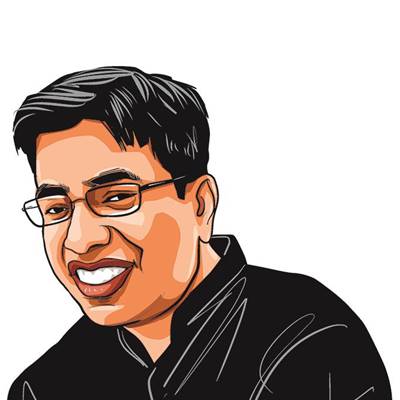Opinion From the Opinions Editor: Reversing brain drain requires honest introspection of what caused it in the first place
Offering operational flexibility to attract scholars settled abroad is welcome. The sentiment, however, won’t amount to much without the freedom to ask difficult questions
 For India, which has been struggling to overcome skill deficits, the ghar wapsi of some of the brightest minds could create much-needed ripple effects in academia, the economy, and business.
For India, which has been struggling to overcome skill deficits, the ghar wapsi of some of the brightest minds could create much-needed ripple effects in academia, the economy, and business. Dear Indian Express Readers,
The Centre’s move to bring back Indian-origin faculty currently working in foreign universities is a welcome move for more than one reason. The anti-immigration sentiment of the current US administration and the funding crunch in American higher education institutions seem to have clouded the academic environment in the country, which is still seen as a global leader in research. For India, which has been struggling to overcome skill deficits, the ghar wapsi of some of the brightest minds could create much-needed ripple effects in academia, the economy, and business. A 2024 study in the International Journal of Educational Research underlined that reverse brain drain led to the enhancement of research capacities, even in advanced countries such as the US. Especially salient for India is the Chinese experience. The paper showed that Chinese returnees, enabled by the country’s Thousand Talents Programme (TTP), promoted “technology spillovers” to local companies whose progress had been hampered by a lack of innovation.
In recent times, the country has taken significant steps to enable collaboration with global technological giants helmed by Indians — Google’s recent investment of $15 billion to build an AI data centre in Andhra Pradesh is a case in point. The joint ventures between Indian and foreign academia have enhanced the Indian knowledge economy’s credibility. Some Indian universities are setting up campuses abroad, while getting top foreign universities to open branches in the country is a work in progress.
That said, the move to get back foreign settled scholars will test the acumen of policymakers. Top Indian institutes like IITs, IISc, ISI, TIFR, AIIMS, and IISERs have consistently produced outstanding work, often despite limited resources. However, several of these academies are today hobbled by a staff crunch. A report of the Parliamentary Standing Committee on Education, Women, Children, Youth, and Sports, tabled in March, speaks of a 56 per cent deficit in institutes of higher learning. Government data presented to the Rajya Sabha in August reveals a 40 per cent faculty vacancy in AIIMS. Compare this shortfall with some other figures. The country’s medical colleges produce more than 1.8 lakh doctors every year. Its yearly output of more than 25 lakh STEM graduates is a formidable asset, second only to China, where about 35-60 lakh students graduate from STEM courses every year. India produces about 40,000 STEM Phds every year, some distance away from the 70,000-odd doctorates awarded annually in China, but not one that indicates a hopeless situation.
Numbers, however, do not tell the complete story of the complicated relations between the knowledge economy’s stakeholders – the aspirant student, teachers, university officials, regulators, government, industry. It’s time to answer difficult questions about the trajectory of the Indian higher education system, especially the top technical institutions. The first batch of IITs were modelled on institutes in the US and the former Soviet Union. AIIMS Delhi was mandated to follow the example of Johns Hopkins University in the US. Did successive governments enable these institutes to create an ecosystem that empowered young minds and enabled them to flourish? There was very little introspection, even as the exodus of talent from the country, especially those nurtured in these top institutes, set records almost every few years. The current regime’s “Institute of Eminence” project has failed to take off in eight years – reports, including in this newspaper, have shown that bureaucratic impediments and short shrift to due procedures hobble the well-meaning endeavour. Today, when India is showing ambitions of becoming a leading knowledge hub, such criticisms should pique policymakers even more. They would be doing the move to attract Indian scientists settled abroad a disservice by not taking an unsparing look at what led to the brain drain in the first place.
China’s project to draw back talent was not a top-down initiative. TTP empowered local governments to create synergies with universities, and then with the national government. India’s educational landscape, in contrast, is regularly marred by rifts between the Centre and state governments over funding, curriculum, and due procedures. Many a young teacher has had to apply brakes on her enthusiasm, courtesy of overbearing deans, VCs, and bureaucratic controls. Policies such as the NEP do speak of the need to cultivate student creativity by empowering the instructor. At the same time, spaces to do so in higher education institutions, never adequate to begin with, are increasingly under siege. It’s also not unusual for professionals to be caught in the crossfire among political regimes. For instance, close to 2,000 jobs, including those of doctors, are threatened in Delhi because the BJP government is jettisoning the AAP regime’s mohalla clinic programme.
The Centre has said that it will offer substantial grants and lab infrastructure to the returning scholars. “Operational flexibility” is also its stated intent. Honouring that sentiment will require undoing a long history and unshackling several fetters. Above all, it will require appreciation of the fact that “operational flexibility” means nothing without the freedom to ask difficult questions – even those unpalatable to the powers that be.
Till next time
Kaushik Das Gupta



